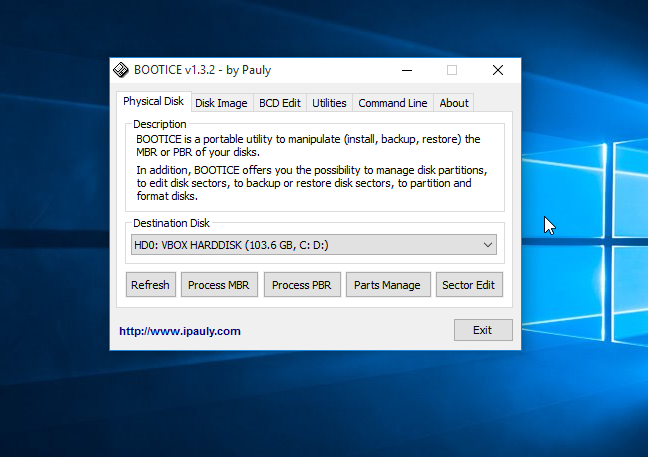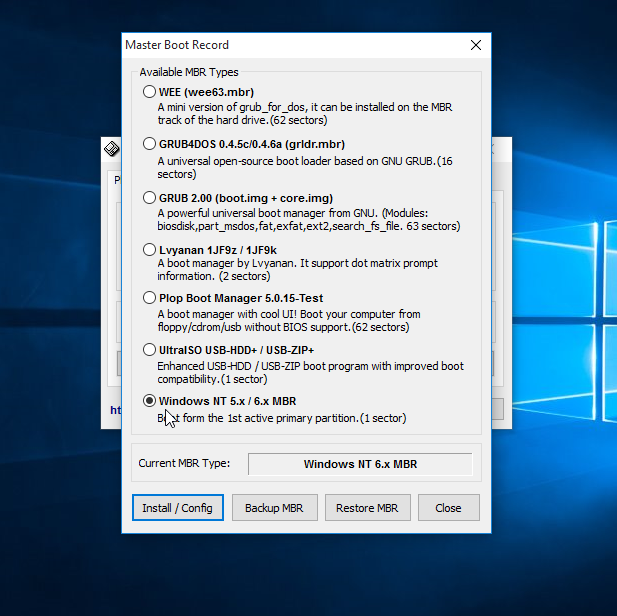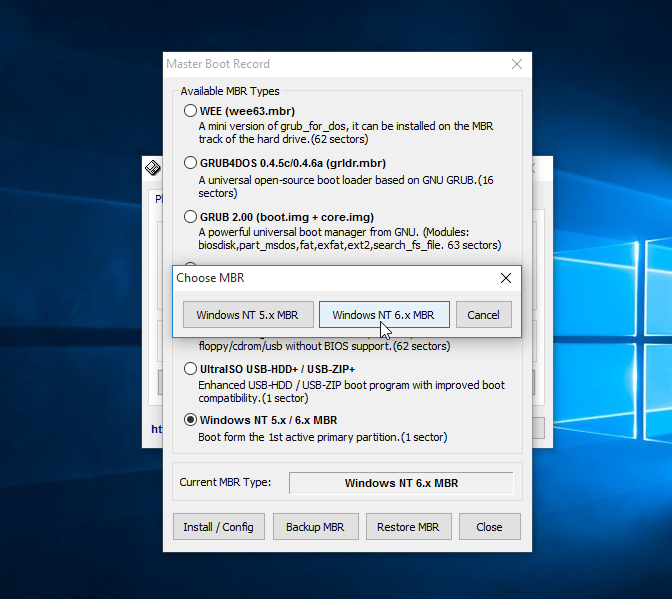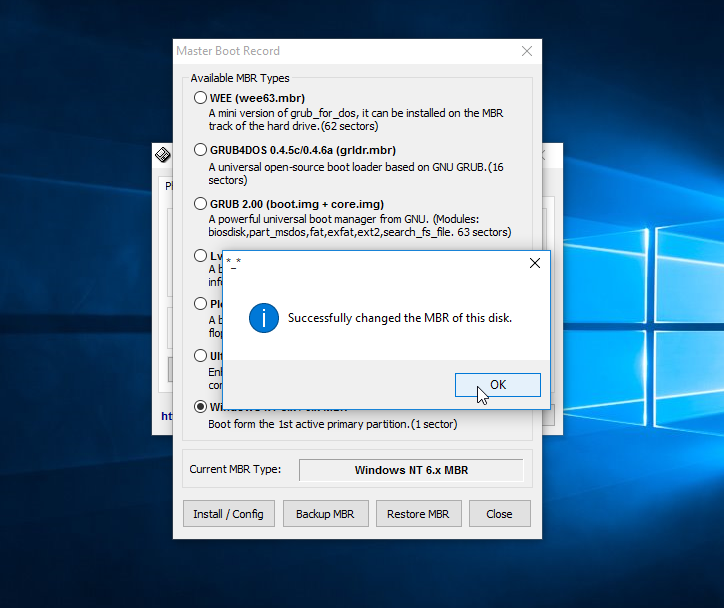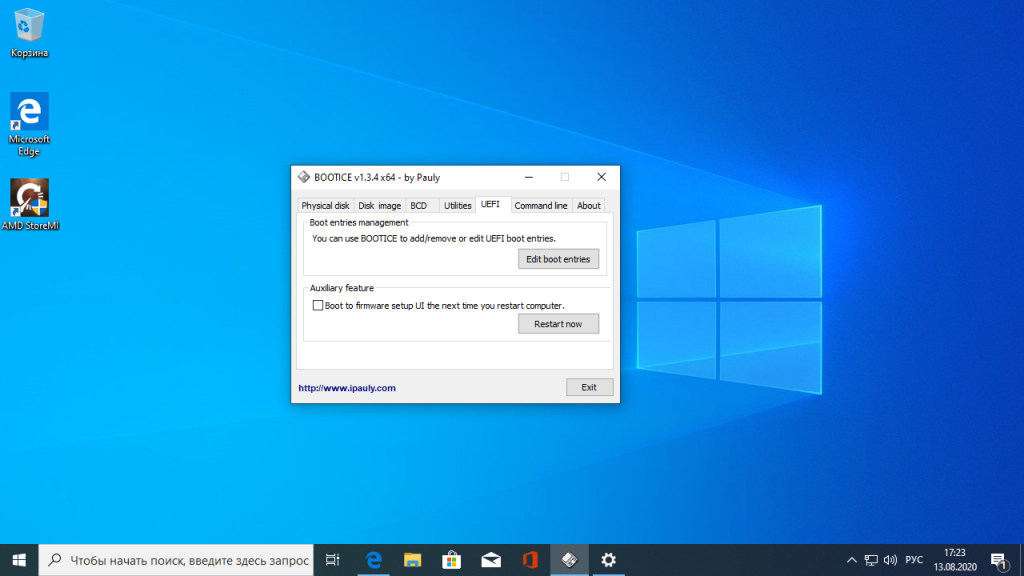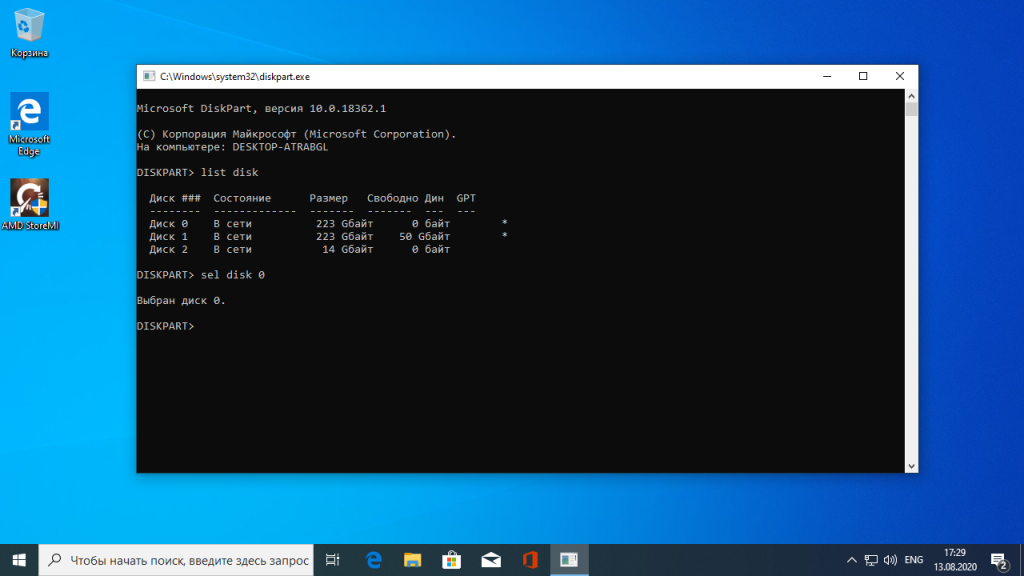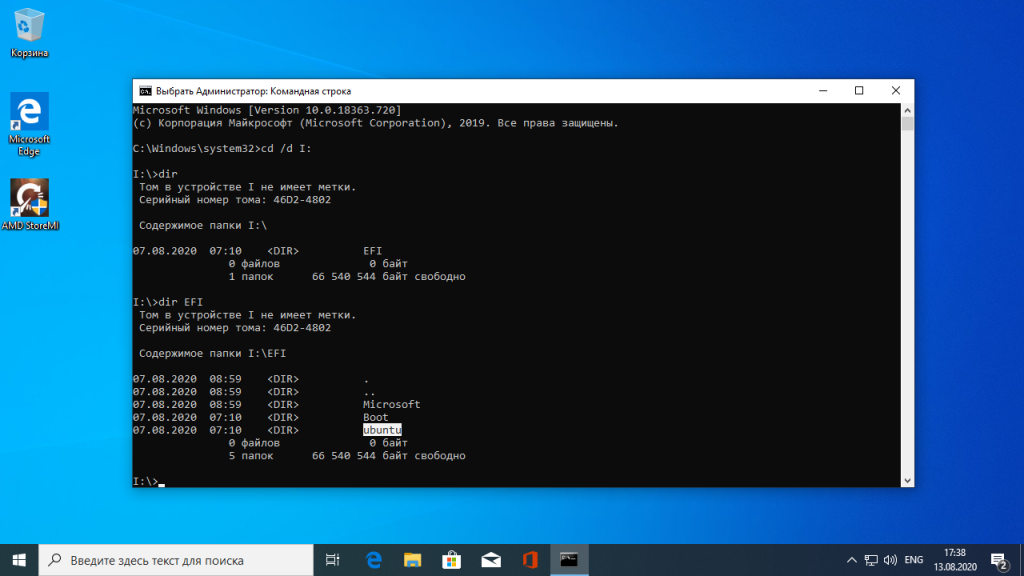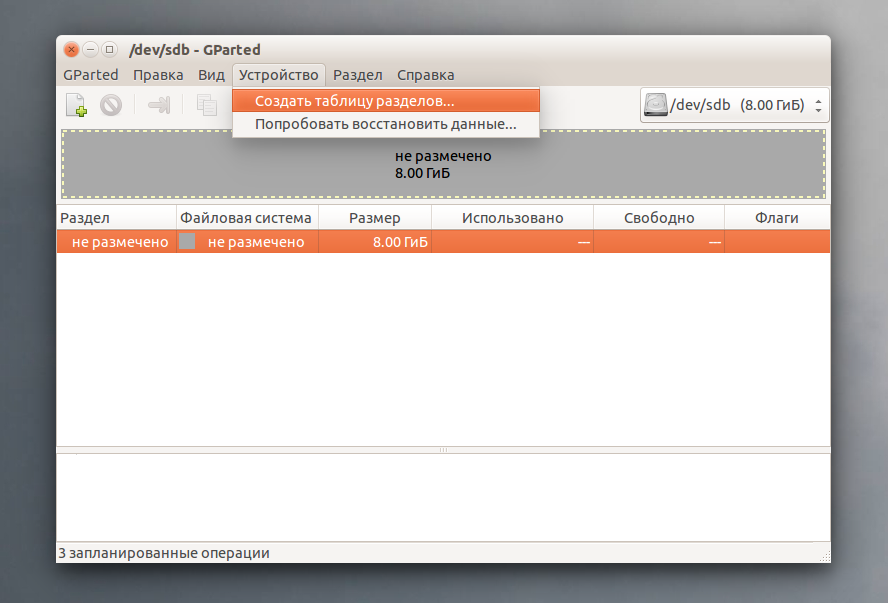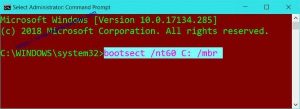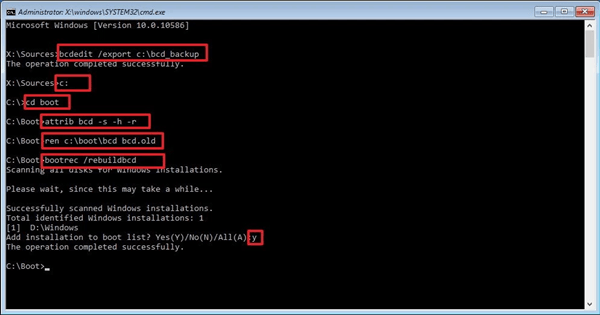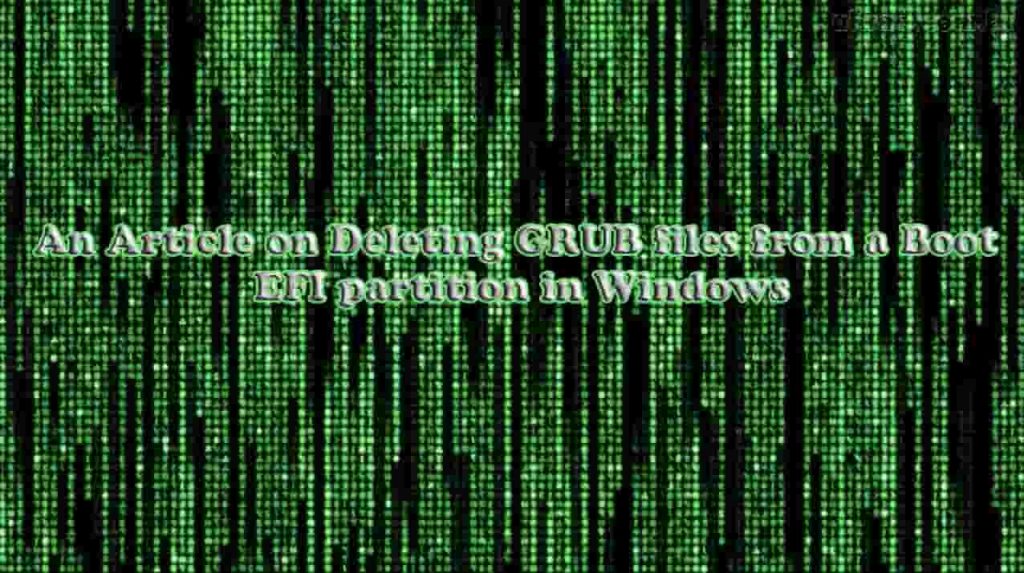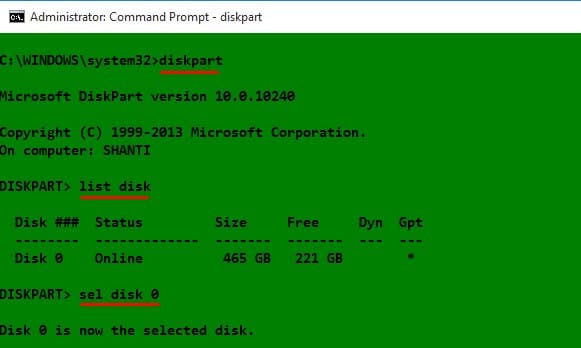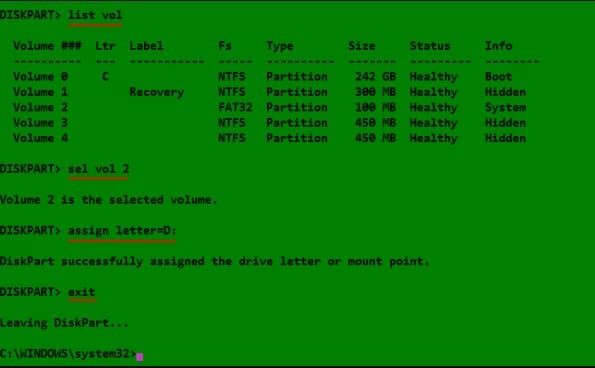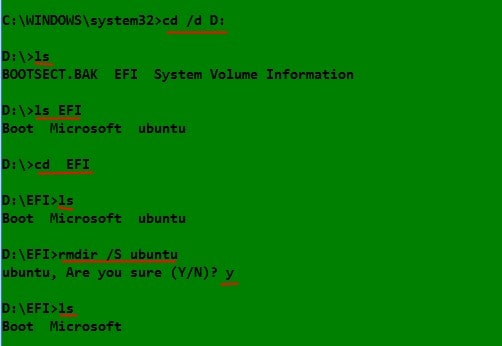Загрузчик Grub — это загрузчик, который используется по умолчанию в большинстве дистрибутивов Linux. Grub расшифровывается как GRand Unified Bootloader, он поддерживает загрузку не только Linux, но и Widnows, и DOS.
Если вы устанавливали Linux, а потом по каким-либо причинам решили его удалить и вернуть Windows или создали загрузочную флешку Linux, но теперь она вам больше не нужна, нужно удалить загрузчик Grub. В этой инструкции мы рассмотрим, как удалить загрузчик Grub из MBR или из UEFI, также поговорим о том, как удалить Grub с флешки.
Как удалить загрузчик Grub и восстановить Windows
Если на вашем компьютере установлено две операционные системы, Windows и Linux, и вы хотите стереть Linux и его загрузчик, восстановив загрузчик Widows, и у вас используется таблица MBR, то это сделать очень просто.
В сети часто советуют способ: взять установочный диск Windows, загрузиться с него в режиме восстановления и выполнить команды:
bootrec \fixboot
bootec \fixmbr
Это действительно ответ на вопрос «как удалить Grub и восстановить загрузчик Windows?», и он работает. Но есть способ намного проще. Вам даже не придётся перезагружать компьютер. Утилита Bootice позволяет восстановить загрузчик Windows и удалить Grub с жёсткого диска в несколько кликов.
Скачать утилиту можно с softpedia, потому что на официальном сайте всё по-китайски. Только выберите правильную разрядность для своей системы. Запустите утилиту, выделите диск, на котором у вас установлен загрузчик Grub, затем нажмите кнопку Proccess MBR:
Затем Windows NT 5.x / 6.x MBR:
И нажмите кнопку Config / Install:
Дальше остаётся только выбрать нужную версию MBR, в нашем случае Windows 7,8,10 — Windows NT 6.x:
И готово: вы смогли успешно полностью удалить загрузчик Grub. Можете перезагружаться и проверять.
Как удалить загрузчик Grub в UEFI
Эта проблема тоже решается с помощью утилиты Bootice. Только на это раз вам нужна именно 64-битная версия программы.
Одно из преимуществ UEFI на MBR в том, что здесь можно устанавливать сразу несколько загрузчиков на специальный раздел. Для удаления загрузчика Grub и восстановления функциональности Windows достаточно переместить Grub чуть ниже в очереди загрузки UEFI.
Откройте программу, перейдите на вкладку UEFI и нажмите Edit Boot Enteries. Откроется такое окно:
Здесь у вас есть два варианта действий. Либо опустить Grub ниже загрузчика Widnows кнопкой Down, либо полностью удалить запись о загрузчике кнопкой Del. Но в обоих случаях файлы загрузчика останутся на диске. Полностью удалить загрузчик Grub со всеми его файлами нужно из командной строки. Это немного сложный процесс, но всё же мы его разберём.
Кликните в левом нижнем углу экрана правой кнопкой мыши, в открывшемся контекстном меню выберите Командная строка от имени администратора.
Далее нам понадобится утилита diskpart, все действия мы выполним с помощью неё. Запустите её командой:
diskpart
Затем смотрим доступные диски:
list disk
И выбираем наш единственный диск, на котором сейчас установлена Windows, а раньше была установлена Ubuntu:
sel disk 0
После того, как был выбран диск, мы можем посмотреть список разделов на нём:
list vol
Среди этих разделов есть и раздел с файлами EFI, для обычной системы он скрыт, но не для этой утилиты. В нашем случае это Volume 2. Как правило, это небольшой раздел с файловой системой FAT32 и отмеченный как системный.
Мы выбрали этот раздел текущим с помощью команды:
sel vol 2
Затем назначим ему букву, чтобы можно было с ним работать:
assign letter=E:
Утилиту можно закрывать. Дальше продолжаем выполнять действия в консоли. Сделать всё с помощью проводника вы не сможете, потому что нужны права администратора. Переходим на диск E:
cd \d E:
Переходим в папку EFI:
cd EFI
Удаляем папку с файлами загрузчика Ubuntu:
rmdir \S ubuntu
Готово: удаление загрузчика Grub завершено, и теперь его файлов больше нет в системе.
На флешках, как правило, используется таблица разделов MBR. Чтобы удалить загрузчик Grub с флешки недостаточно просто её отформатировать. Загрузчик записывается в таблицу MBR, а поэтому нам придётся её пересоздать. Очень не рекомендую использовать этот способ для удаления загрузчика Grub с жёсткого диска, потому что вы потеряете все данные.
Работать будем в системе Linux. Сначала посмотрите, какое имя устройства у вашей флешки, например, с помощью программы Gparted или в терминале командой:
fdisk -l
Затем удалим полностью существующую таблицу разделов:
dd if=/dev/zero of=/dev/sdc count=512
Теперь, с помощью той же Gparted создаём новую таблицу разделов:
Создаём раздел на флешке и форматируем в файловую систему FAT32:
Теперь вы знаете, как удалить MBR с флешки, только не сотрите его с жёсткого диска, потому что потом будет сложно восстанавливать.
Выводы
Я не знаю, зачем вам понадобилось удалять Linux. Это отличная операционная система, правда ещё остаётся оборудование, которое она не поддерживает или поддерживает не полностью. Не сдавайтесь быстро: если Linux не работает на одном устройстве, то, возможно, в будущем у вас появится другой компьютер или ядро начнёт поддерживать ваш ноутбук. Пробуйте и экспериментируйте. Во всяком случае теперь вы знаете, как удалить Grub с жёсткого диска. Если остались вопросы — задавайте в комментариях.
Обнаружили ошибку в тексте? Сообщите мне об этом. Выделите текст с ошибкой и нажмите Ctrl+Enter.
На чтение 2 мин Опубликовано
У моего ноутбука Razer 2016 были установлены Windows 10, Kali и Ubuntu, но после того, как обновление Windows стало недоступным, разделы Linux стали недоступными также.
Я удалил разделы Kali и Ubuntu, включая SWAP, но GRUB там был.
Мне нужно было безопасно удалить GRUB, не нарушая зависимости, и для меня работал следующий метод удаления загрузчика GRUB из Windows 10.
Он также работает на Windows 7.
Я использовал его до сих пор 2/3 раза с прошлого года на моем ноутбуке под управлением Windows 10 несколько раз, и он никогда не падал.
У меня отключена Secure boot, и я использую загрузку Legacy в BIOS.
Содержание
- Удалить загрузчик GRUB из Windows
- Шаг 1 (необязательно): используйте diskpart для очистки диска
- Шаг 2. Запуск командной строки администратора.
- Шаг 3: Исправьте загрузочный сектор MBR на Windows 10
Удалить загрузчик GRUB из Windows
Выполните следующие шаги, чтобы удалить GRUB из Windows 10.
Шаг 1 (необязательно): используйте diskpart для очистки диска
Отформатируйте свой раздел Linux с помощью инструмента управления дисками Windows.
Затем вы можете увеличить размер диска на своем основном разделе (т. Е. C :), чтобы утвердить это пространство.
Если вы сделаете этот шаг, безопаснее будет сделать перезагрузку после того, как вы это сделали.
Шаг 2. Запуск командной строки администратора.
В Windows 10, Windows 8.1 и Windows 7 найдите команду и просто щелкните правой кнопкой мыши на значок командной строки из результатов поиска и выберите «Запуск от имени администратора».
Не используйте Powershell, поскольку PS не работает для нескольких команд.
Шаг 3: Исправьте загрузочный сектор MBR на Windows 10
Просто введите следующую команду, чтобы удалить загрузчик GRUB из bootsector на MBR и вернуться к загрузчику Windows. В командной строке (администратор):
C:\> bootsect /nt60 <drive name>: /mbr
Если ваш диск C: \ эта команда будет такой:
C:\> bootsect /nt60 C: /mbr
Пожалуйста, не спамьте и никого не оскорбляйте.
Это поле для комментариев, а не спамбокс.
Рекламные ссылки не индексируются!
В некоторых случаях пользователи предпочитают устанавливать несколько операционных систем на одно устройство. Например, Linux и Windows. При этом происходит замена процессов – один встроенный загрузчик меняется на другой. Чтобы исправить ситуацию, необходимо ознакомиться с инструкцией, как удалить внутренний Grub и восстановить прежний загрузчик Windows 10.
Что такое Grub
Grub – это аббревиатура названия определенной программы – Grand Unified Bootloader. Приложение является загрузочным для определенных видов операционных систем. Софт достаточно сильный, способен активировать работу различных ОС (например, Linux, FreeBSD, иных).
Утилиту необходимо дополнительно настраивать. После выполнения определенных операций появится перечень операционок, которые могут загружаться подобным образом. По выбранной ОС кликают левой клавишей мышкой и затем подтверждают загрузку кнопкой «Enter».
Внимание! Главная особенность приложения – возможность задавать отдельные параметры для загружаемой операционки. Это значит, что пользователь может выбрать характеристики, которые потом будут отправлены в ядро загрузчика для последующей обработки информации ОС.
Данная программа часто совмещается с ОС Linux, а также устанавливается в режиме «По умолчанию» для общего числа дистрибутивов.
Удаление Grub на Windows 10
Если на персональном компьютере (стационарном устройстве, планшете, ноутбуке) несколько операционных систем, иногда требуется процедура по удалению второстепенного загрузчика и восстановление идентичного приложения компании-разработчика Microsoft. Используют пару стандартных методов.
Часто применяемые – активация утилиты через отдельный носитель и специальный режим работы Винды, удаление с помощью UEFI.
При восстановлении ОС
Операционная система Windows 10 подразумевает возможность восстановления работоспособности ОС с дополнительного носителя – загрузочной флешки или диска.При выполнении данной процедуры необходимо сделать следующее:
- установить дополнительный накопитель, при включении отметить загрузку главного устройства с данного диска;
- после появления первого окна кликнуть по блоку «Восстановление»;
- откроется список доступных функций, выбрать раздел «Командная строка»;
- в пустой строке необходимо поочередно вводить команды bootrec.exe/FixBoot, bootrec.exe/FixMbr.
После выполнения инструкции необходимо перезагрузить персональное устройство. После повторного включения компьютера приложение Grub будет удалено.
В UEFI
В 64-разрядной операционной системе персонального устройства можно использовать софт Bootice для удаления ненужного приложения. Главное преимущество – возможность одновременного применения нескольких загрузочных утилит для конкретного раздела. Инструкция:
- запустить приложение, перейти на пункт «UEFI», кликнуть по строке «Edit Boot Enteries»;
- после появления следующего окна выбирают вариант устранения программы Grub: переместить утилиту ниже загрузчика Windows клавишей «Down» или удалить софт кнопкой «Delete».
Файлы утилиты сохранятся на диске при использовании любого из двух вариантов. Чтобы удалить приложение, запускают Командную строку, вводят значение diskpart. В перечне выбирают нужный диск, раскрывают его параметры и удаляют раздел «Ubuntu».
В некоторых случаях требуется удаление дополнительного загрузчика. Для стандартного решения используют два способа – раздел «Восстановление» при загрузке с отдельного носителя или приложение UEFI. Какой из способов выбрать – решает пользователь, но важно следовать инструкциям.
Вам помогло? Поделитесь с друзьями — помогите и нам!
If you are one of those frustrated users who is searching for how to remove grub loader files from Windows 10/11 then you are in the right place! Guess what? You can do it without cd. Many users want to install both Ubuntu and Windows on their computer systems as we know that these both are different Operating System OS for a Computer. I have tried several times to install both of these OS on the same PC, but due to some reasons I always fail to do it.
After these failed attempts, I came to know that these failed attempts might be occurring because of the GRUB folder which can be found in the Boot EFI folder. I deleted the Ubuntu folder from the Boot EFI folder, to complete the installation. Unfortunately, it didn’t work for me.
So, I tried another technique or method on “How to delete GRUB files in a Windows 10/11 Boot EFI Partition.” It can be done by using Microsoft Windows 10/11 by using the command line. In this article, I am going to tell you how you can apply this method. In the previous guide, we talked about how to install the software in Kali Linux.
Before we begin with our primary topic, the first thing that we are going to do is discuss EFI Partition. EFI Partition system (also known as ESP) is a partition that is OS independent which also acts as a storage place for the EFI applications, bootloaders, and drivers to be started and used by the UEFI firmware.
The UEFI specification orders to provide support for the FAT32, FA16, and FAT12 file systems. The additional file systems can be supported by any conformant vendor optionally. Just like Apple Mac can support the HFS+ file system.
What is Grub and Grub Loader?
GRUB which is also known as Grand Unified Bootloader is a boot loader package that is created or developed by GNU Project. It is a reference exercise or implementation of Multi-Boot Specification which provides its user with a service. That service is a beneficial choice that depends upon the users of this software. This choice is about booting one or multiple Operating Systems (OS) which are installed on a single computer system. The user can also select a particular kernel configuration that is available on specific partitions of an operating system.
GRUB is software that was programmed or developed from a package which is known as Grand Unified Bootloader. It is broadly used for Unix-like systems. The Operating System of GNU uses or works with GNU GRUB as a boot loader, just like most Solaris OS and other Linux Distributions. The Solaris operating system is available for x86 based systems, with its first starting release named Solaris 10 1/06 release.
Linux Hardening Guide: How to Secure Linux Server and Keep it Safe from Hackers.
What is a Grub File?
GRUB is designed to boot an expanded range of Operating Systems which are arising out of file systems of wide range as it is a boot loader. The number of possible root file-systems is increasing which reside upon Linux and due to this file-system GRUB is becoming really popular these days. Grub is permanently documented in an info file of GNU.
How to Delete Grub from Windows 10/11 (Using Command Line)
As I have discussed above the GRUB and about the GRUB files after we also talked about their purpose and working. So now I am going to explain to you about deleting GRUB files from Windows 10/11 with the help of Command-Line which is available in Windows.
The first thing that you have to do is work on the Command-Line and search for all of the available hard drives or partitions available on PC. Then after listing all of the available partitions on the hard drive of your PC you have to target a folder that consists of GRUB files.
Another reason for deleting this folder is that you won’t have to delete the Linux Partitions. Which would not delete the GRUB files automatically from the Boot EFI folder?
Now let’s get started and get rid of these GRUB files. The first step that you have to do is click on start and then move your mouse to the Menu and click it. Then after that, you have to type CMD in the search or run the bar. Then the next thing that you have to do is right-click on the icon of the application and then select the option “run as administrator.”
Read Also: Best Windows 7 Themes 2022 Free Download.
In the 1st image or figure, I have underlined some commands which are used to achieve or complete the first step, such as: selecting and listing the hard drive. The target disk (disk from which we are going to delete GRUB files) is of 465 GB hard drive which consists of GPT partition.
Once you have selected the target disk, then all of its partitions will be listed in the CMD, now you can identify the partition or volume which corresponds to the Boot EFI folder. In the 2nd figure, the partition in which our GRUB files are present is Volume 2. The type of this single volume is mostly “FAT32” in the File System Fs column and it is denoted as System in the column named Info.
Once this partition has been selected and identified, then the next step that you have to perform is to assign a drive letter because it makes it really easy and straightforward to work. I have entrusted my disk or partition with the D letter.
Read Also: Commando VM – Windows 10 Based Hacking OS.
The last step is the most important step and this step is the essential full stop to all of this process. This final or previous step requires some changes to the Boot EFI folder, it will again list its contents, but this time it is going to identify the folder which contains GRUB files. These GRUB files will be available or installed under or in the folder with an identical name same as the distribution.
Also Read: Top 6 GNOME Desktop Environments for Linux Distros.
As an illustration, if Ubuntu has been installed just like the example, then the folder name in which there are GRUB files will be of the name “Ubuntu” same as the distribution. Then the next step that you have to perform is to delete the folder by entering or using the following command “rmdir/s.” This command in Windows is equivalent of the Linux/Unix rm or –r command.
Now I am going to write the code which you can copy from here and paste it into your Command Prompt or CMD and run it to delete GRUB files from your PC.
The code which is required to be entered in CMD to remove grub from Windows 10:
The following commands are used or required to select and identify the hard drive:
- diskpart
- list disk
- self disk
These following commands are required or used to select the Boot EFI partition, list the partitions:
Read Also: 10 Best Android Emulators for Linux Distros – Run Android on Linux.
First, assign the partition with any drive letter.
- list vol
- sel vol 2
- assign letter=D;
- exit
These following commands are required to open or select the Boot EFI folder and then locate and delete the GRUB folder
- Cd /d D:
- Ls
- lsEFI
- cd EFI
- ls
- rmdir /s Ubuntu
Another working fix:
There is another fix that has been suggested to me by one of our readers below:
- You will need to start “cmd” first of all.
- Once in command prompt run “diskpart”
- Next, you will need to type “list disk”
- Now run “sel disk XYZ”, where XYZ is your drive
- Now it is time to select the EFI volume
- For selecting the volume type “sel volume XYZ”
- Now type “exit” so you can stop diskpart
- Now open the back command prompt and type “XYZ:” and hit enter
- Now you will need to enter “dir” so you can list all the directors which are mounted in that volume, in our case its “XYZ”.
- Now you will need to change directory to EFI, and do rmdir /S ubuntu.
You can find more information about the above steps here.
The method above has been tested on the latest Windows 10 builds including 1909, 2004 and 20H2.
More Linux Guides to enhance your knowledge:
- 10 Useful Ubuntu Commands for Every Linux Beginner.
- 8 Best Kali Linux Terminal Commands used for Hacking.
Wrapping Up
In today’s tutorial, we discussed a very interesting topic that is very useful for the user who wants to install Windows 10 and Ubuntu in a single computer system without any problems. The topic which we discussed was “Deleting GRUB files from a Boot EFI partition in Windows 10/11”. However, no matter what version of Windows you are running make sure it is activated. You can read on how to activate Windows 10 for a lifetime using just CMD. The above guide will help you in removing grub rescue too without a cd.
I have tried several times to delete the GRUB files from my PC because I was really excited to install two different OS on a single computer system. But whenever I tried to do it there were some errors which I had to face. But now I found a way to install it by deleting these GRUB files. In this article, I explained to you what is GRUB and I also described the history of GRUB. Then furthermore we discussed the GRUB files and their importance and usage. After that, I showed you a way to delete all do these GRUB files from Windows 10/11 using CMD.
How To Remove GRUB for Windows 10 Bootloader
If you’ve installed Ubuntu or any Other Linux based OS along with Windows 10, Grub Bootloader is also installed along with it to boot the OS. Grub Bootloader lets you Boot the OS along with Windows 10.
After uninstall Ubuntu or any other Linux Based OS Grub Bootloader remains installed. You can Uninstall and Remove Grub Bootloader from Windows 10. Once you’ve done this, Grub Bootloader will no longer available on your computer.
1. Type Windows Key + R to open Run box and type cmd inside it.
2. type diskpart in cmd window and click yes when prompted.
3. This will opens the new window
4. Type command «list vol» this will show you all the disk volume. one of this will be EFI/System volume, it will always in FAT32 format
5. Select the volume by «Select Volume X» command where X will be replaced by volume number or EFI/System volume.
7. Assign the letter to volume using «Assign Letter=X» command, where x will be replaced by any letter. For convenience I’m assigning letter Z. Type «Exit» command to close the window after assigning the letter.
8. Now Open Command Prompt as an Administration. If prompted press Yes.
9. Type «Z:» command to access the EFI drive.
10. Type the command «dir» to find the directory inside the drive.
11. Now type «cd EFI» command to go inside the EFI directory.
12. Type «dir» to view the directory the directory inside. There will be more than 2 directory one will be Microsoft, second will Boot and third will be the OS directory that was uninstalled it may be Ubuntu if you uninstalled ubuntu. In my case the third directory is Android.
13. Type «rmdir /s OSNAME» command, where OSNAME will be replaced by your OSNAME, to delete the GRUB bootloader from your computer. If prompted press Y.
14. Exit the command prompt and restart the computer the GRUB bootloader is not longer available.
